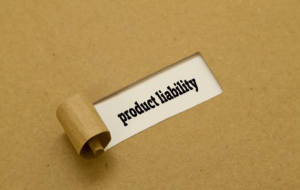Were You Injured Due to a Defective Product You Bought? Call Us Today
 A defective product is one that, when consumed, has side effects on the consumer. Over the years, there have been numerous misunderstandings regarding who should take responsibility for a defective product liability claim. If you ever find yourself in such a scenario, hiring a lawyer could save you time and money. However, manufacturers and producers aren’t the only ones held responsible. Anybody who supplies the product is also held accountable by the law. Therefore, before a product gets to consumers, it’s required to meet the required standards. Most of the product liabilities cause death. As a consumer, one needs to engage the expertise of a risky product attorney in Los Angeles. In this blog post, we look at three types of defective product liability claims:
A defective product is one that, when consumed, has side effects on the consumer. Over the years, there have been numerous misunderstandings regarding who should take responsibility for a defective product liability claim. If you ever find yourself in such a scenario, hiring a lawyer could save you time and money. However, manufacturers and producers aren’t the only ones held responsible. Anybody who supplies the product is also held accountable by the law. Therefore, before a product gets to consumers, it’s required to meet the required standards. Most of the product liabilities cause death. As a consumer, one needs to engage the expertise of a risky product attorney in Los Angeles. In this blog post, we look at three types of defective product liability claims:
1. Failure on the manufacturer’s side
Most lawsuits are a result of a manufacturing defect. For such a claim, the design isn’t considered defective but the manufacturing process. In the operation of product manufacturing, something went wrong; hence the product became defective. Some of the most common defective manufacturing include:
- Medicine is manufactured with harmful ingredients.
- Some vehicles lack proper safety measures.
- Vehicle tires that don’t meet quality standards.
Therefore, the consumer has the right to sue the manufacturers if they get injured from using such a product. It is, however, rare to get two similar products with defective manufacturing. A consumer should store the product to act as a sample in court. But most manufacturing defects are not intentional. What matters is what happened after the work was designed. If a product doesn’t meet standard qualities, the manufacturer will be held responsible for any product injuries.
Challenges of proving manufacturing defects
A manufacturing defect is one of the hardest cases to solve in court. The consumer should hire a lawyer to make the process easy. If brakes in a car fail and the car gets into an accident, the manufacturer will be held responsible. According to the law, he is responsible for the accident. On the consumer’s side, it might be their fault in failing to use brakes as they should.
For there to be a claim, the claimer should produce the defective product. When accidents occur, cars get damaged to no recognition; this makes it hard to get the product from the damaged car. Therefore, consumers find themselves on the losing end of such claims.
2. Defects in design
The design of a product is how a product is made. For example, if it was medicine supposed to be stored in a plastic bottle and ends up being stored in a metal one, then that will be referred to as a design defect. Design defects differ from manufacturing defects since they result from the manufacturer planning to produce the product. For a weakness to be caused by a defect in design, the system should have reasonable errors leading to injuries.
A company will be held responsible if they could have altered the product’s design and avoid injuries. The consumer should have enough evidence showing how the technique used to harm and how another plan could have worked better. Most companies alter the design to avoid incurring costs. For judges to come up with a judgment, they estimate the safer method’s value and compare it against the cost of damages such as medical bills and money paid to lawyers. A consumer has two types of claims to make under these circumstances: negligence and strict liability.
Negligence claim
Under this claim, the consumer holds the company responsible for knowing the damage the product would cause but continuing with the manufacturing process. They would be better positioned if they can prove the manufacturer would still make a profit if they used the safer design.
Strict liability claim
A manufacturer is held responsible if they sell a product to consumers, which can cause harm. If the product manufactured is considered harmful by nature, the manufacturer is held accountable if it harms consumers.
Design defects are among the most serious product liabilities. A consumer might be unable to work from consuming such a product. Therefore, the company is held responsible by the law to compensate them. Working with a Los Angeles personal injury attorney puts you in a better position to maneuver the complex law on liability claims.
3. Marketing defects
It’s weird how a product gets manufactured and designed well but still considered harmful for human consumption. Before a product gets consumed, people always go through the instructions and warnings. A company needs to include how to use, and signs of possible damage caused. With the instructions clearly stated, the consumer will know how to handle the product. For example, if there are no warnings regarding certain medications, a patient who takes it and suffers side effects should sue the company.
Therefore, the manufacturer must ensure products have required instructions and warnings before selling it to consumers. If consumers feel they have been harmed or injured from consuming such a product, they should consult with an attorney in Los Angeles. They will ensure you and your loved ones get the care you need.
How to differentiate the three types of product liability claims
Medications serve as the best example of defective product liability claims. If you happen to consume one with a few drops of unintended syrup, then that is a manufacturing defect and you should procure the services of an attorney. If the same medication without being interfered with caused harm, then that’s a design defect. But if the consumer takes the drug with painkillers and the manufacturer didn’t warn on the possible side effects, then that’s a marketing defect.
Conclusion
The law is complex; therefore, you want to work with a lawyer who has the expertise in defective product liability claims. No matter the request you have, having legal representation puts you in a better position to win the case. It might be a misunderstanding between the consumer and the manufacturer. In such a scenario, you can choose to settle the issue without involving a product injury lawyer.

